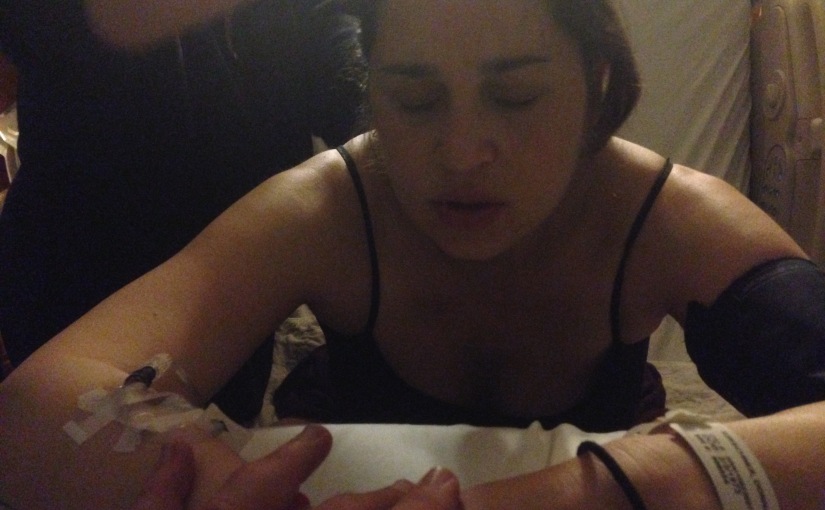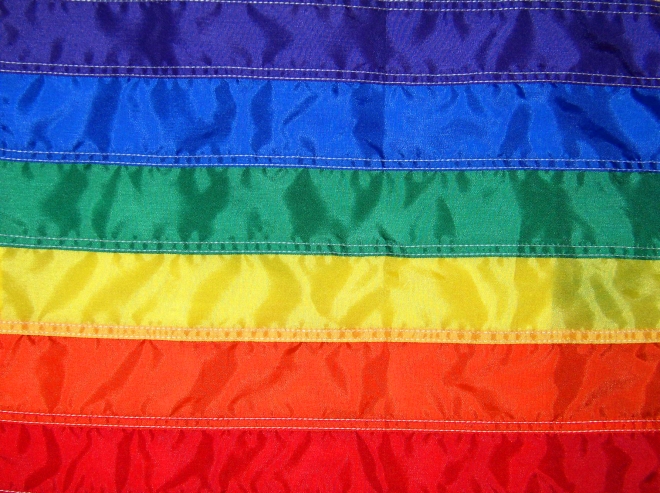-Donna Harel, PhD.
So after 3.5 years of nursing, my little one and I finally weaned. The kid got a remote control truck, I got a mammogram, and we had a weaning party, complete with boobie cupcakes. For us, weaning was cause for celebration, not only for my kid (because being a three year old and moving on to a life apart from the sustenance and comfort and embodied connection with Mama is a big damn deal), but also because it marked for me a transition to the next stage of being a mom. I’ve come to see motherhood as an enterprise that begins with a big bolus of oxytocin and goes downhill from there.
Over the 9.75 years of my nursing career (that’s a third of my adult life), I’ve had a mixed relationship with breastfeeding. My first nursing experience with Ella was one in which I positioned myself in an oppositional stance to what I perceived as the wider mainstream culture. Breastfeeding wasn’t as entirely common in 2001. At the time, I was conducting research among homeschoolers, for whom breastfeeding served as a cultural norm. Indeed, many moms extended the breastfeeding relationship well past the age of three or four, and some went as long as age seven. So in that community I experienced tremendous support for breastfeeding: It brought me credibility as an anthropologist insider.
Over the course of my nursing career with oldest, I began to teach childbirth, and I became something of a “lactivist” with a mission to promote and normalize breastfeeding. I was on top of the latest research, taught birth from the perspective of how a birth experience might affect breastfeeding (namely, the relationship between whether or not a birth was medicated and how quickly the mother would connect with the baby). I taught partners how to be good advocates for the breastfeeding mom. I had information on the optimal way to introduce a bottle. I explained why babywearing promoted breastfeeding and how the “private” breastfeeding was a problem in that it sent moms the message that they should be sequestered away from other people and that breastfeeding should be hidden. The list goes on and on.
And I breastfed everywhere. I breastfed while lecturing at a homeschooling conference. My baby had fussed in the back of the room, disconsolate, so I stopped my lecture, asked my husband to bring her to me, put her in the sling, popped her on my boob, covered us with the tail of the sling, and continued to lecture. A mom came up to Andy afterward and told her that I was her hero.
I breastfed at the post office and while doing research at Van Pelt Library. A security guard came up to me and asked, “Did you know that that baby is nursing? I don’t think you can do that here.” I looked up at her. Oh boy, lady, please kick me out, I thought. I would love to get my degree for free. Instead I smiled. “Yes. I am aware that there is a child on my breast. I put her there. You don’t have a problem with it, do you?” She mumbled and turned away. Fortunately, breastfeeding has become more common and less controversial (if it ever was) in the 12 years since my oldest and I weaned.
She weaned unceremoniously at three years and nine months. She has a January birthday, and, by the time Halloween rolled around, I realized that she was no longer nursing for a minute before rolling over and falling asleep. It felt like the right time for both of us. At that point, she was already out of my bed. We would read and nurse to fall asleep, until the nursing stopped.
My experience with breastfeeding my second child was unremarkable, with one exception. I had built up the importance of breastfeeding to my older sister, who had a breast reduction in her late teens and was unsure whether she would produce enough milk for her expectant child. So committed was I to this mission that I would pump milk for this unborn child as I nursed Maya in the morning and at least once or twice more per day. I built up a formidable supply. But sitting up with a baby in the morning and pumping, while trying to attend to the needs of a demanding five year old, was not alway easy.
It took my obstetrician, sitting with me on the floor of my room at the psych ward of the very cushy hospital where I was recovering from the first manic episode of my adult life, to put an end to it. She gently said, “Donna, I think you need to give that up.” I had placed such tremendous importance on breastmilk, that it had built up terrific anxiety for my sister and allowed me to compromise my health and sanity as well as my relationship with my kids.
I did have a funny experience tandem nursing both my daughter and my niece (who are five months apart) at the pool while my sister took my oldest in the water. The fact that I so seamlessly and mindlessly picked up my niece to nurse her when she fussed speaks to another theme of breastfeeding for me: it is the lazy woman’s crutch. Instead of figuring out how to distract or redirect one of my kids, I have often stuffed a boob in their mouth. It’s easy, provides a needed moment of calm for both me and the kid, and functions as a reset.
This crutch came in handy when I took a three year old to the March for Women’s Lives in 2004. We were on the National Mall in Washington, DC, at one of the largest protests in recorded history. She was tired and cranky and overwhelmed by the crowd. I sat down to nurse her, noticing, not far off, a tattoo-covered mama doing the same with her toddler. We gave each other a knowing look of solidarity (apparently that’s a square on “breastfeeding bingo”–just next to “creepy guy leering at you”). The moment provided me with a sense both of the normalcy of breastfeeding and of how it served as something of a lame tool in my mothering toolkit.
In the summer of 2008, when my middle was 2.5, we discovered that I had Lyme disease and decided to wean immediately. Doxycyclene, the antibiotic treatment for Lyme, turns the adult teeth of a nursling black (or is it green?). I remember speaking with my therapist that morning: How would I share the news with Maya? What kind of substitute or prize could we offer? How would we mark the occasion?
I picked her up from camp that afternoon and said, “Guess what? You’re WEANED!” And we bought a special cup, celebrated with a family dinner, and had a weaning party, complete with boobie cake. She seemed to have felt very special. I teared up. This marked what I thought would be the completion of an important part of my life: six years of caring for my kids in this particular way. Because I had breastfed my oldest so long, three years and nine months was my standard. I felt as though I were cheating my second. Still, we both did fine (abrupt weaning can hurt), and we moved on.
Now that my breastfeeding relationship with my last child is over, I am recalling that I really do have a sense of severance from my kids at that stage in our relationship. I not only need to be more resourceful, but I also have to work to find ways to connect. This kid happens to be very cuddly, so we are still holding each other and hugging quite a bit. But I remember being almost mad at my other two. They were no longer physical extensions of me. Not only could I not kid myself that I was eating for two, but I started to see them as somehow other. hat’s what psychologists call individuating, I think.
I’m ALL about helping kids become independent. It’s my policy to not do shit for anyone that they are capable of doing for themselves (although I break this rule all the time, usually when we are in a hurry). This rule makes me feel superior to all of the helicopter parents out there. Aren’t they trying to raise an adult? I’m so virtuous in my benign neglect. And I don’t think that I think of my kids as narcissistic extensions of myself. Who am I kidding? Of course their accomplishments are because of my amazing support and the brilliance of my cook-for-yourself-or-starve-I-already-fed-you-from-my-BODY-for-three years-what-more-do-you-want? attitude. And of course they act like assholes because of my deficient, inconsistent, permissive parenting. Or maybe it’s the age. Or their chemistry. Or all three. That’s it, when they suck, it’s yes, yes, and yes. So I knew that the decision to wean would bring with it the risk of being at sea while we figured out our newly reconstituted relationship.
That first night was miserable. My little one couldn’t fall asleep and epitomized forsakenness. This child still claims that falling asleep without nursing is impossible (even though the kid has fallen asleep for babysitters and family this way since infancy). I routinely offer assurances that we will still be able to cuddle, and care, and be together even without milk. It’s going pretty well.
I held a weaning party, replete with boobie cupcakes and activities out of a desire to talk about breastfeeding and hear people’s stories. I want to explore the intensity around the need that people feel to breastfeed in order to perform a certain kind of motherhood. The extent to which women feel power as they hold their baby to their chests and feel that the baby is soothed, fed, contented. Nursing mothers can watch their kids grow at the breast.Gets a surge of oxytocin that is so powerful. Did they experience a feeling of wellbeing that bonds the mother to the baby? A peaceful feeling of a baby moulding with their body? Did they think they developed a communication system of cues and responses as I believed I did? Did they grow in confidence and competence? Did they become smug? Did this line of thinking and talk cause more harm than good?
My own experiences were by and large wonderful, but I recognize that I had so many privileges. For me, breastfeeding became an excellent excuse for lying down with a baby or toddler in the middle of the day. By the time Ronnie was born, I was an avid knitter and was able to knit while she was nursing as we lay down, Ronnie eventually falling asleep in the crook of my arm. We also would read while nursing, and this became a favorite activity for my kid. This probably helped promote the reading bug. And my kids always smelled like my armpit.
Yet, the backache from holding a child in the crook of your arm. The frustration if they begin to wake when you unlatch. The need to pee held hostage if you don’t want to wake the baby and have to start over. The annoyance of a little hand groping for the other breast. Perhaps to prime the pump, but it’s annoying as fuck and began to sour my breastfeeding relationship with Ronnie. The “gym-nurstics” of a toddler who uses you as a fucking playground while they have your boob in your mouth. Pick an activity, kid. Sit the fuck down, because if you are the piggie, then I must be the trough. Not cool, kid. I won’t miss that.
I wonder if I’m going to miss having a lactivist’s sensibility. Like many activist’s arcs, my relationship with the subject has softened or, at least, changed over time. I’ve become more sensitive to the displacements that women might feel when they don’t breastfeed. I hold in one hand a glee over the research and awe over the substance of the stuff and the magic that we attribute to it. I have a friend whose child was a surrogate, and she paid the surrogate mother to pump and ship breastmilk for six months after her child’s birth. So, over the last 20 years, the message that breastmilk matters has gotten through.
And, while I am psyched, so psyched, about this, my activism has always had a strong class-based critique. I will always remember checking in with a Starbucks barista who had taken my childbirth class. When I asked her how the breastfeeding was going for her three month old, she said: “Oh. I had to stop. It was hard to pump. We don’t really have a long enough break time, and I always felt like I was skating out on my co-workers. Also, there was no other place to do it but the bathroom. There are only two of them here, and the customers would bang on the door. It was too much.” Hell yeah. And Starbucks was a company that long touted its breastfeeding friendly policies for its corporate workers.
I distinctly recall feeling elated to learn that the Affordable Care Act had within it provisions that required pumping facilities for workers. Our society has definitely become more breastfeeding friendly, particularly for some sects of the workforce. But the health benefits of breastfeeding and the opportunity to nurse and pump seem to remain privileges that beget privileges. And my gynecologist’s office offers has formula samples (although I think you have to ask for them at most hospitals these days, so as to not undermine breastfeeding, which is cool). So the public health work in this area continues.
I did my part as a childbirth teacher, as a role model of boobs akimbo, and as an amateur lactation consultant. I connected a grad school friend, who was about to adopt a newborn, with an area pediatrician who was also a lactation consultant. She had a hormone regimen for promoting lactation, and the mom was able to nurse her kid. That was cool. And I’m pretty proud of the few stories where I talked a new mom off the ledge at the hospital where “they” were telling her this, that, and the other about why she should supplement, stay separate from her baby, etc. I always made a case for intuition, which, more often than not, meant the mom advocating for breastfeeding and, on occasion, the mom intuiting that something was actually wrong and that a short amount of formula plus pumping to increase supply was the right way to go.
One of my sister’s friends (my sister was always pimping me out as a source of help) wrote to me a year after her kid was born to let me know that not only did I help steel her courage to be a badass, fierce, protective mama bear (pediatricians love those), but that she also was pumping extra milk for a milk bank and was thinking of becoming a lactation consultant. So, hurray for lactivism! And I knitted many a boobie hat: a beanie that looked like a breast so that when a mom was asked to cover up, she could put it on her baby’s head and everyone could appreciate the splendor of a boob, even as the baby’s head covered the real deal.
I hope I haven’t milk shamed anyone. I’m sure that in my efforts to go, “Here! Nursing! Get used to it!” I probably alienated some people and made them feel uncomfortable. There are so many ways for people to make moms feel bad. It’s endless, really.
———
And when we played “breastfeeding bingo” at the weaning party, most of the women with kids under the age of 10 did not experience resistance, ridicule, or disdain from others in their breastfeeding journeys. I won for most places and activities associated with nursing. Other than having sex, being the driver of a moving vehicle, or getting a blood draw, I cannot think of anything that I haven’t done while breastfeeding.
For the kids, the weaning party was a playdate that punctuated for my child a new stage in life, much like an upsherin would be for an orthodox boy or a head-shaving for three year olds entering monasteries for training. For the moms, the weaning party was a chance to chat a bit about breastfeeding and parenting. I had solicited friends’ tales of weaning on Facebook and had gotten some interesting stories. It turns out that weaning gets little systemic chatter. But people were happy to talk about what precipitated their decisions to wean and how it felt physically and emotionally.
I included kaleidoscopes as party favors. They invite us all to find beauty within constant change. I’ve actually decided that I should start a kaleidoscope collection and always make them gifts for life-cycle events. Who knows what I’ll be able to think about when I’m not in a milk fog?








You must be logged in to post a comment.